
If you’re looking to grow watermelons on your balcony, choosing the right strategies can make all the difference. From selecting compact varieties like ‘Sugar Baby’ or ‘Crimson Sweet’ to using large containers with good drainage, every step matters.
Make sure your spot gets at least 6-8 hours of sunlight daily. A mix of rich soil and compost helps roots grow strong. Water carefully—keep the soil moist but not soggy.
With smart tips, even small spaces can grow big, sweet watermelons. Try these ideas and watch your balcony bloom with tasty fruit.
Did you know you can grow watermelons on your balcony? It’s easier than you think! Start with small, bushy varieties and a sunny corner.
Use a deep pot with loose soil to let roots spread. Water regularly but avoid overdoing it. Your efforts will pay off with juicy, homegrown treats.
Turn your tiny space into a watermelon wonderland today!
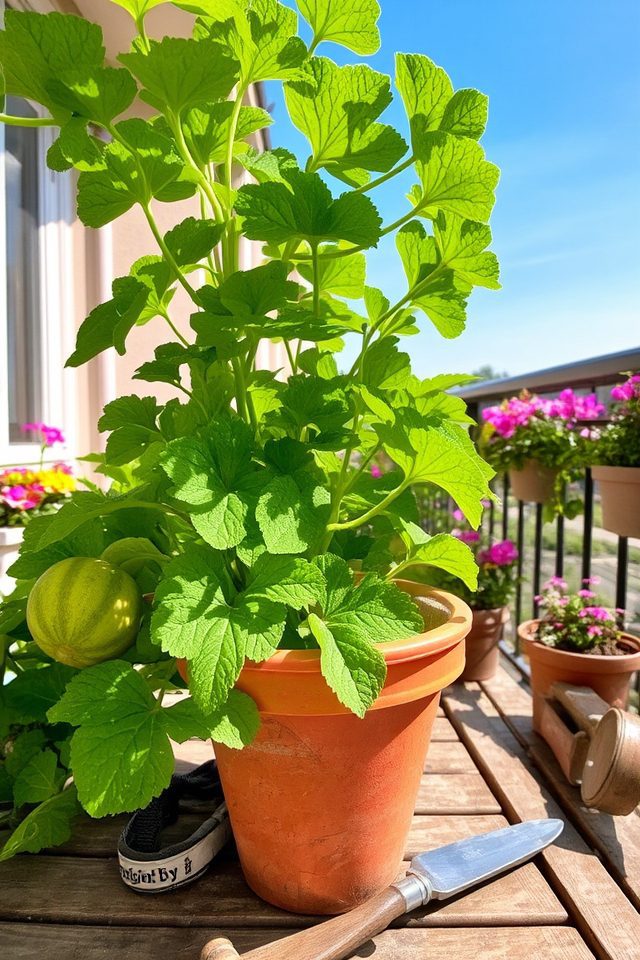
When selecting the right watermelon variety for container gardening, consider choosing smaller types such as ‘Sugar Baby’ or ‘Icebox,’ which are better suited for limited space. These varieties tend to have a compact growth habit and produce smaller fruits, making them ideal for pots or balconies. Look for disease-resistant options and check the expected mature size to guarantee they fit comfortably in your chosen containers while receiving adequate sunlight and resources.
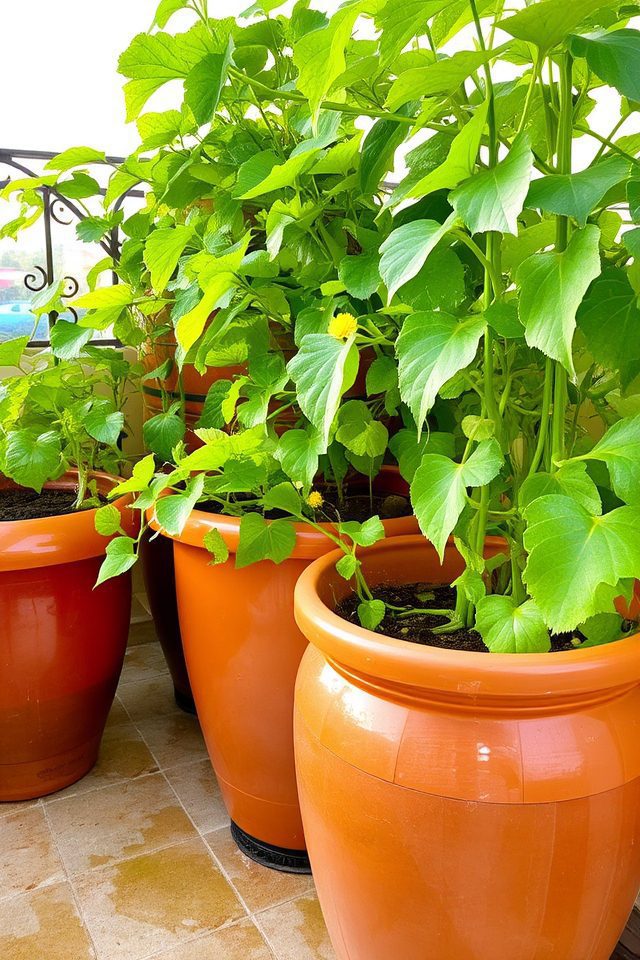
When selecting containers for your watermelon balcony garden, it’s crucial to choose large, sturdy pots that can accommodate the plant’s extensive root system. A container with a minimum depth of 12-18 inches and a width of at least 24 inches is ideal. Confirm the pots have proper drainage holes to prevent waterlogging. Opt for materials like terracotta or plastic, which retain moisture while also providing insulation. Finally, consider using self-watering containers for added convenience in maintaining hydration during warm months.
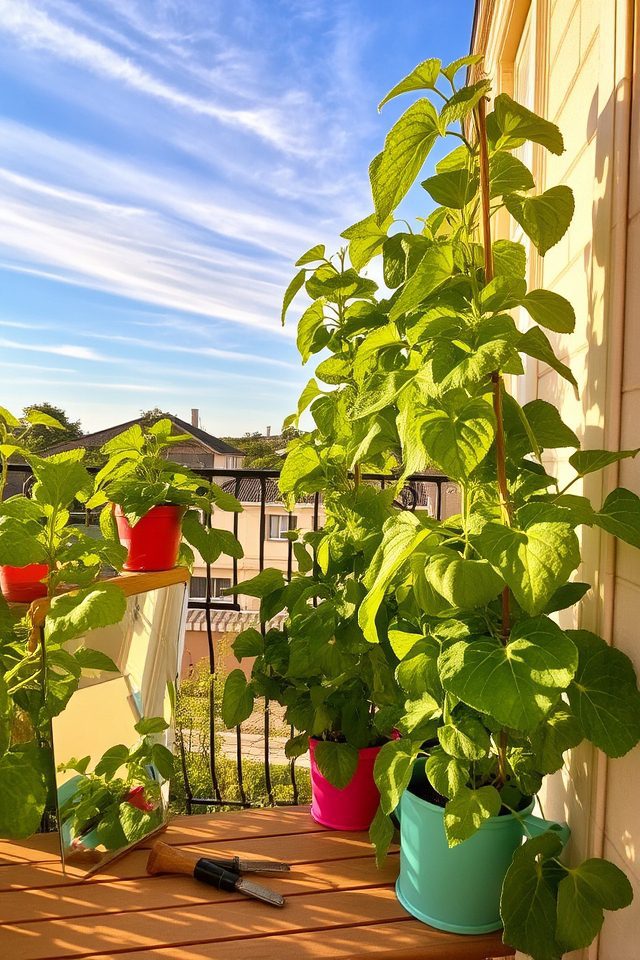
To successfully grow watermelons on your balcony, optimizing sunlight exposure is essential. Aim for at least six to eight hours of direct sunlight daily, as watermelons thrive in warm conditions. Position your plants on a south-facing balcony for maximum light, and consider using reflective surfaces, like light-colored pots or mirrors, to enhance sunlight exposure. Regularly monitor your plants for signs of sun damage and adjust their placement if needed to guarantee healthy growth and fruitful yields.
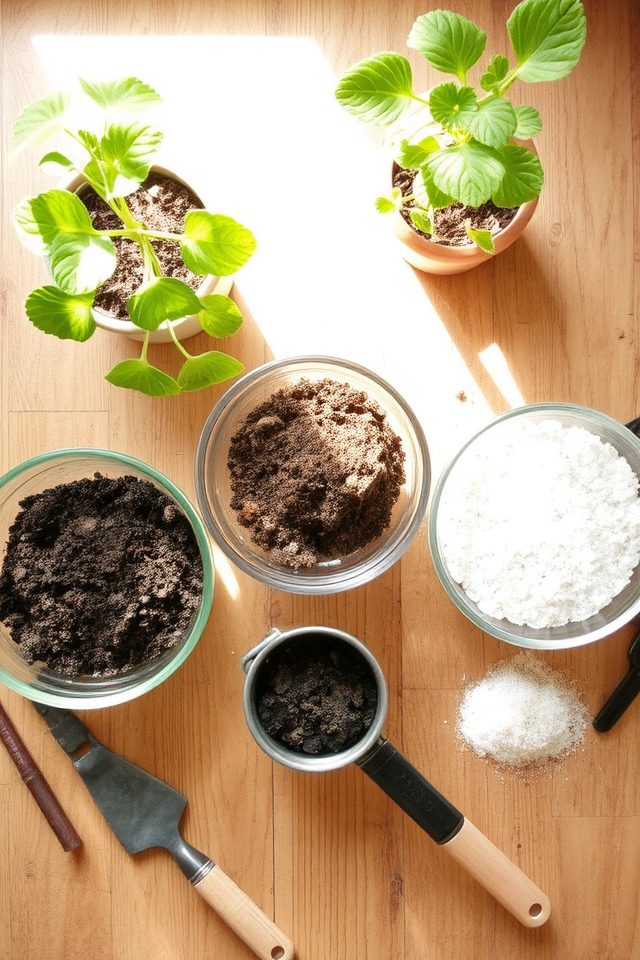
To grow healthy watermelons in your balcony garden, start with a well-draining soil mix. Combine equal parts of high-quality potting soil, compost, and perlite or sand to enhance drainage. This mixture provides essential nutrients while allowing roots to access oxygen. Additionally, consider adding organic fertilizers like bone meal or compost tea to boost growth. Ensuring the soil pH is between 6.0 and 6.8 will create a favorable environment for your watermelons to thrive.
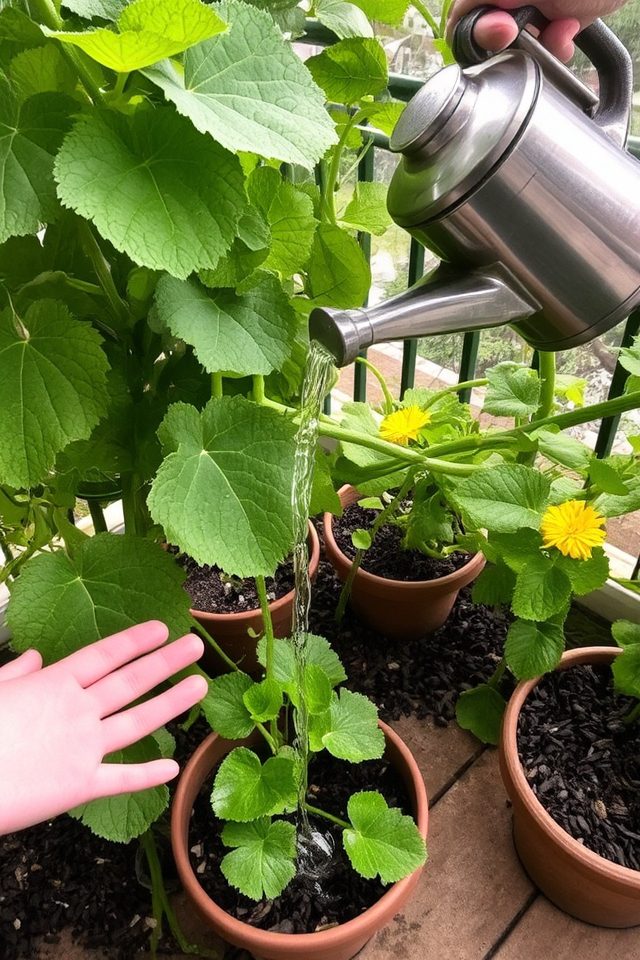
Watering techniques are vital for nurturing thirsty watermelon plants, especially in a balcony garden. These plants require consistent moisture to develop sweet, juicy fruit. Begin with deep watering to encourage root growth, aiming for about 1-2 inches per week. Utilizing drip irrigation or self-watering containers can help maintain steady moisture levels. Mulching around the plants also aids in retaining soil moisture and cooling the roots, ensuring your watermelons thrive under the sun.
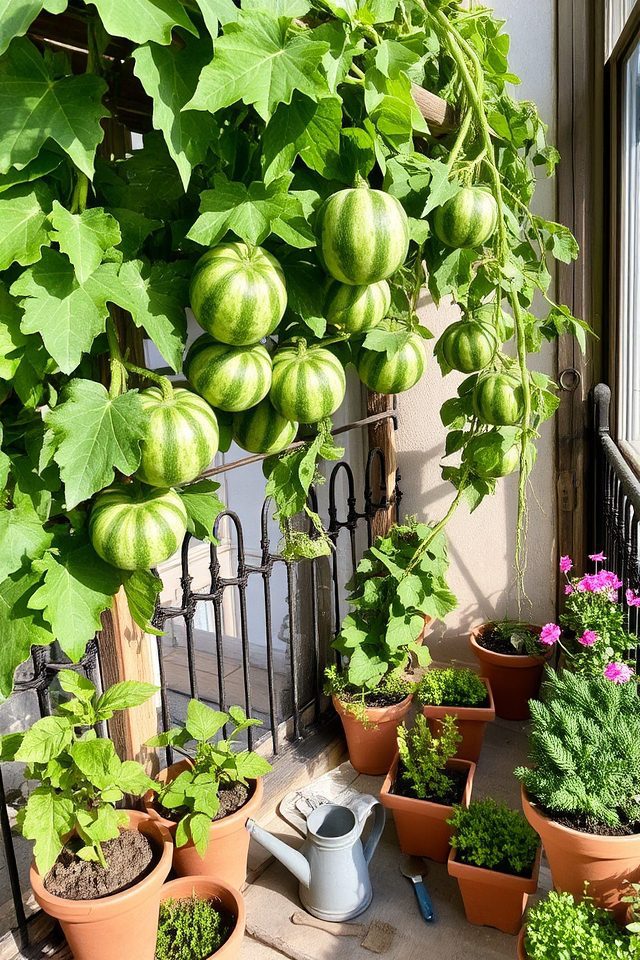
Supporting your watermelons with trellises is an effective way to maximize space and promote healthy growth in a balcony garden. Trellises provide vertical support, allowing watermelon vines to climb, which helps improve air circulation and reduces the risk of disease. Using strong materials like wood or metal, guarantee the trellis is sturdy enough to hold the weight of the melons. With proper support, your watermelons can thrive and produce larger, healthier fruit while adding a beautiful element to your garden.
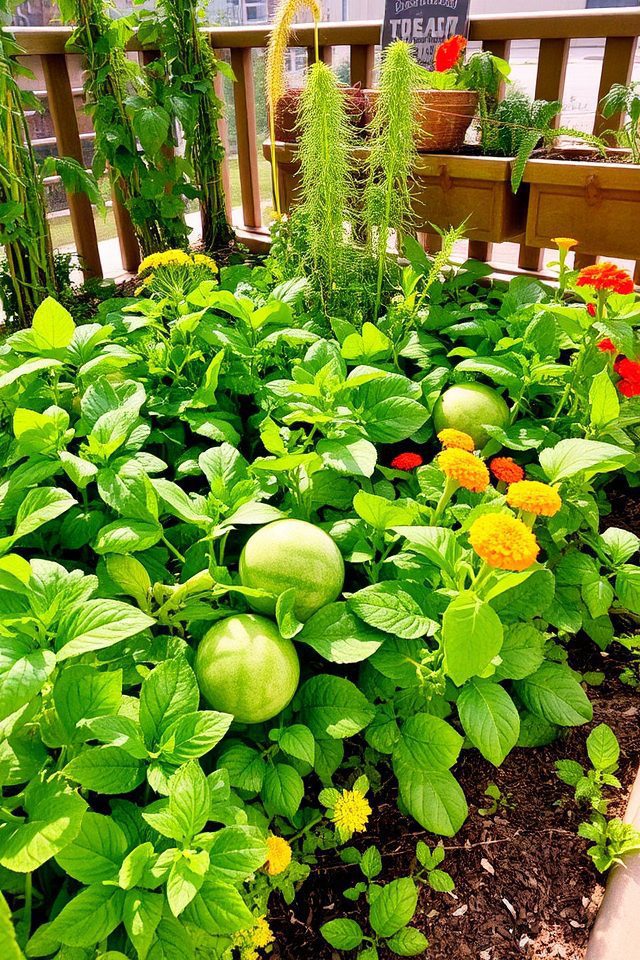
Companion planting with watermelons can enhance growth and flavor while naturally deterring pests. Ideal companions include plants like basil, which can improve watermelon taste, and marigolds, known for repelling harmful insects. Corn offers shade, helping protect the vines from excessive heat. Additionally, planting radishes can help aerate the soil and prevent pests. By strategically choosing companions, you can create a harmonious garden that supports watermelon growth and boosts overall garden health.
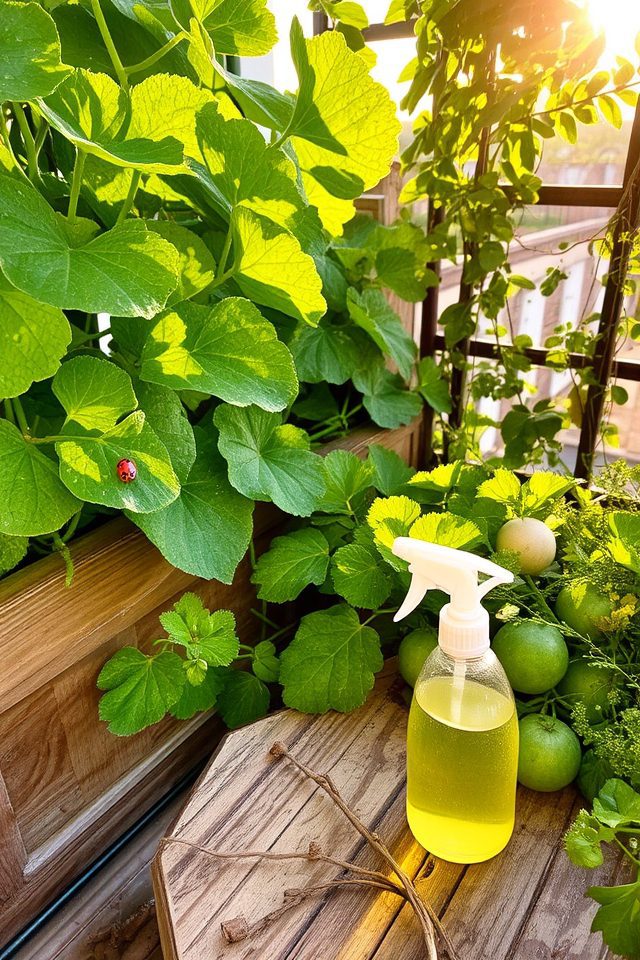
Maintaining a healthy balcony watermelon garden requires effective pest management strategies. Start by regularly inspecting your plants for common pests like aphids, spider mites, and whiteflies. Use organic insecticidal soap or neem oil to treat infestations naturally. Encourage beneficial insects, such as ladybugs and lacewings, that prey on harmful pests. Additionally, rotating your crops and practicing good hygiene by removing debris can help prevent pest problems in your watermelon garden.
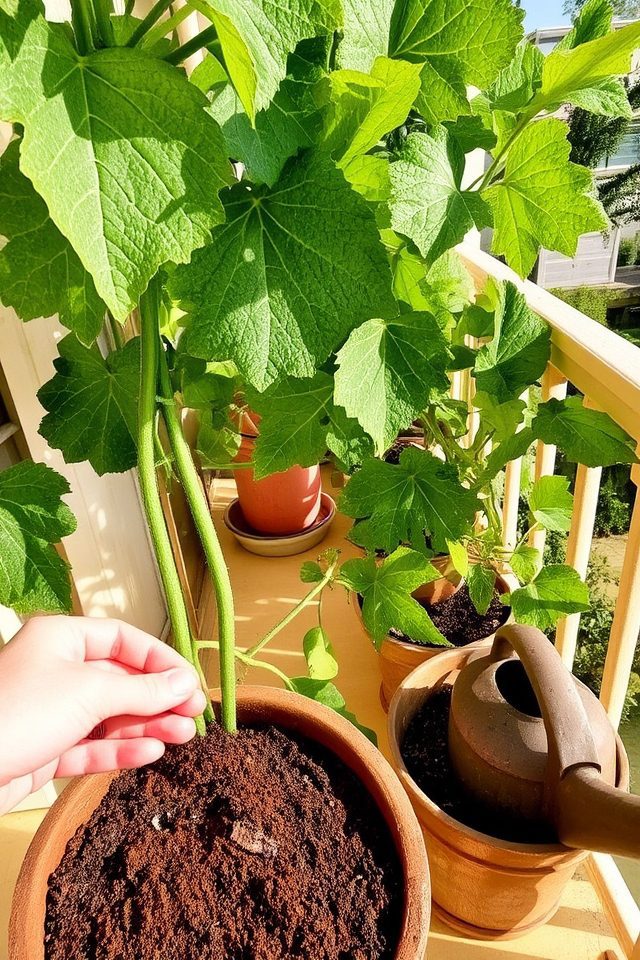
Fertilizing your watermelon plants is essential for achieving a bountiful harvest. Start with a balanced fertilizer, rich in nitrogen, phosphorus, and potassium, to promote healthy growth. Apply it at planting time and again when buds form. Additionally, using organic options like compost or well-rotted manure can boost soil fertility and enhance flavor. Always follow the recommended application rates and pay attention to your plants’ needs, adjusting fertilizers based on their growth stage for maximum yield.
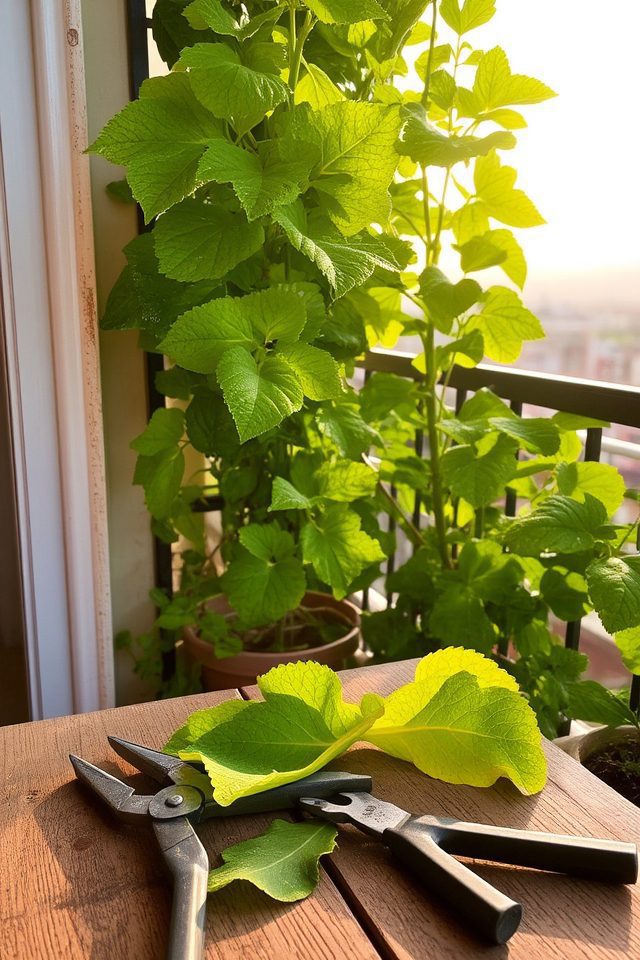
Pruning is essential for maintaining healthy watermelon plants, especially in a balcony garden where space is limited. By selectively removing excess foliage, you can improve airflow around the plants, reducing the risk of fungal diseases and promoting better sunlight penetration. Focus on trimming dead or yellowing leaves and any overcrowded vines. Regular pruning encourages stronger growth and fruit production, ensuring your watermelon plants thrive in their vertical environment.
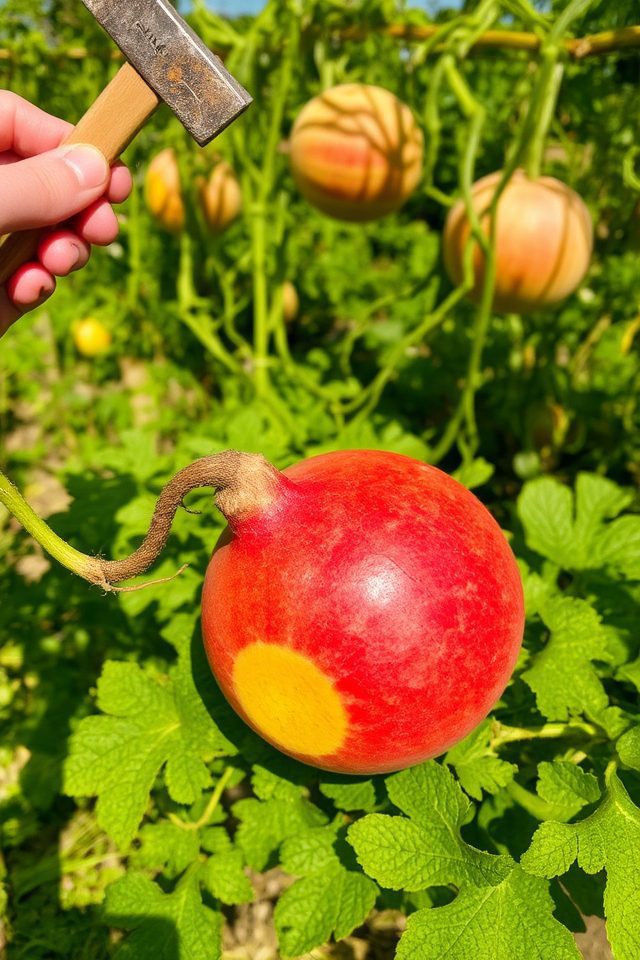
Harvesting watermelons at the right time is essential for ensuring their sweetness and flavor. To determine ripeness, look for a creamy yellow spot on the bottom, indicating it has ripened on the vine. The tendril nearest to the fruit should be dried and brown, and the skin should have a dull sheen rather than a shiny one. Additionally, tapping the watermelon should produce a deep sound, signaling it’s ready to be picked.
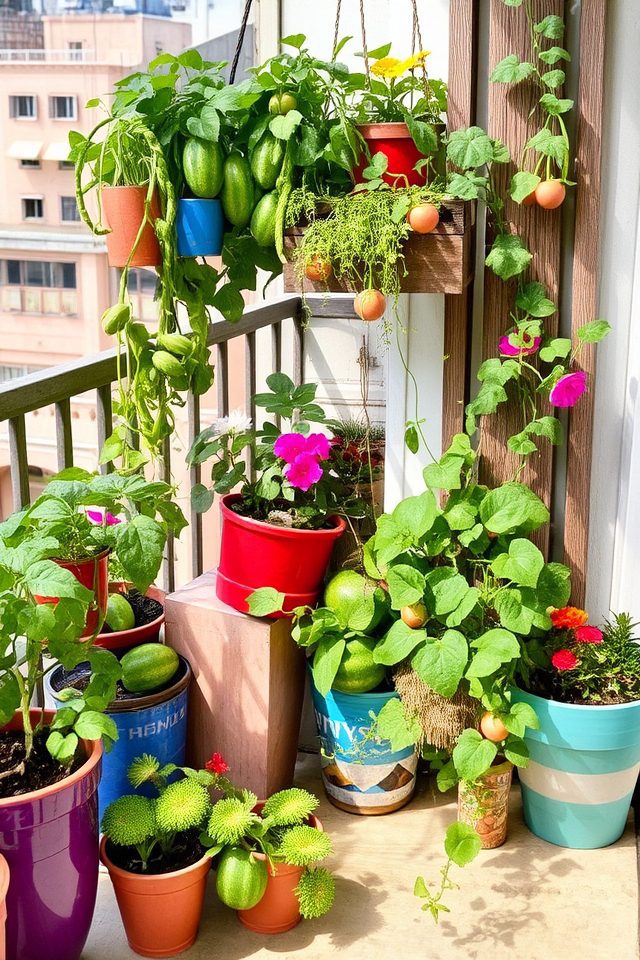
Creative container arrangements can transform your balcony into a vibrant watermelon garden. Choose pots in varying heights and sizes to create visual interest. Incorporate colorful ceramic pots or rustic wooden containers for a charming aesthetic. Group containers together in clusters, mixing ornamental plants with your watermelon crops. Use hanging planters or vertical gardens to maximize space while adding a lush, green backdrop. Don’t forget to think about drainage and sunlight for ideal growth!

Vertical gardening is an excellent solution for maximizing limited balcony space while cultivating a flourishing watermelon garden. By utilizing wall planters, vertical trellises, and hanging pots, you can create a stunning green wall that showcases beautiful watermelon vines. Incorporate shelves or pegboards to hold smaller pots, allowing for easy maintenance and artistic displays. This innovative gardening approach not only optimizes space but also adds a unique aesthetic to your balcony, making it both functional and visually appealing.
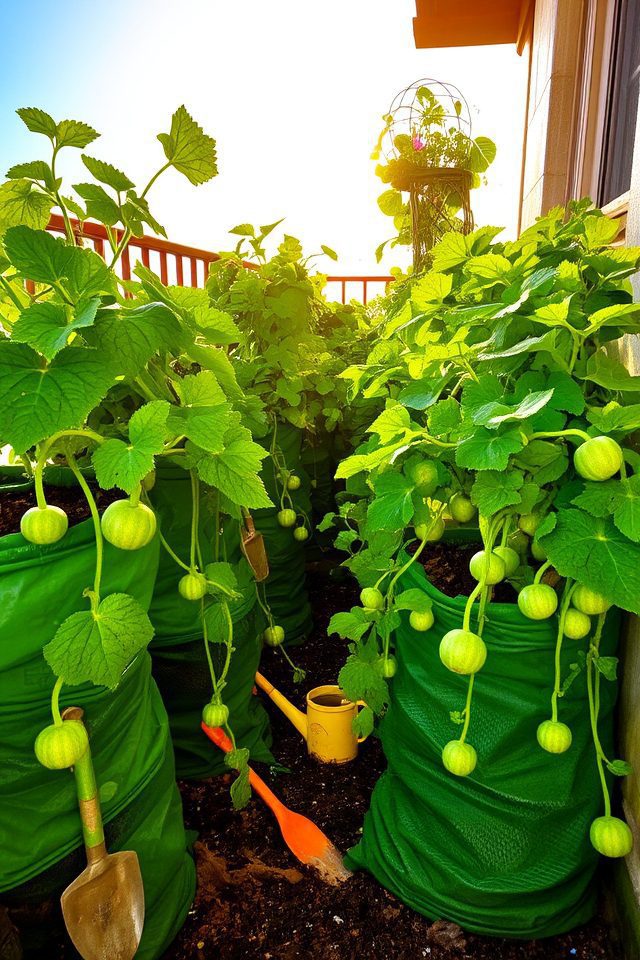
Using grow bags for watermelon cultivation is an excellent way to maximize space on your balcony while ensuring proper drainage and soil aeration. These versatile bags come in various sizes, allowing you to select the perfect dimensions for your watermelon variety. They are lightweight, easy to move, and promote root development, which is essential for healthy fruit production. Additionally, grow bags can be filled with a nutrient-rich soil mix, making it simple to create ideal growing conditions for your delicious watermelons.
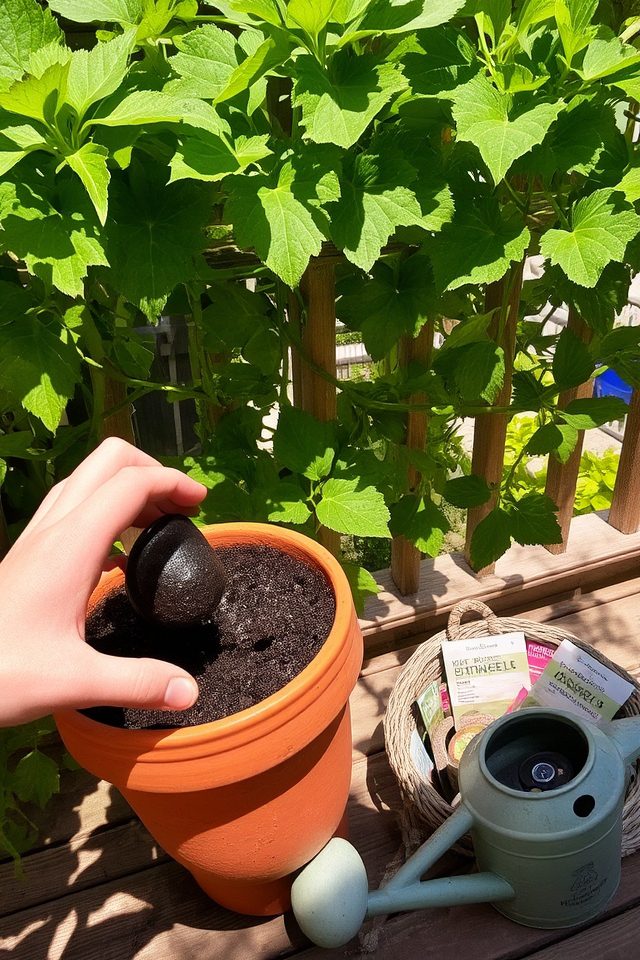
Preparing your watermelon plants for summer involves a few key steps to guarantee they thrive in the warmer months. Start by making sure they have adequate sunlight, ideally around 6-8 hours daily. Mulching can help retain soil moisture and regulate temperature. Regular watering is vital, so take care to water deeply but infrequently. Additionally, monitor for pests and diseases, applying organic treatments as needed. Fertilizing with a balanced nutrient mix will also promote healthy growth and fruit production.
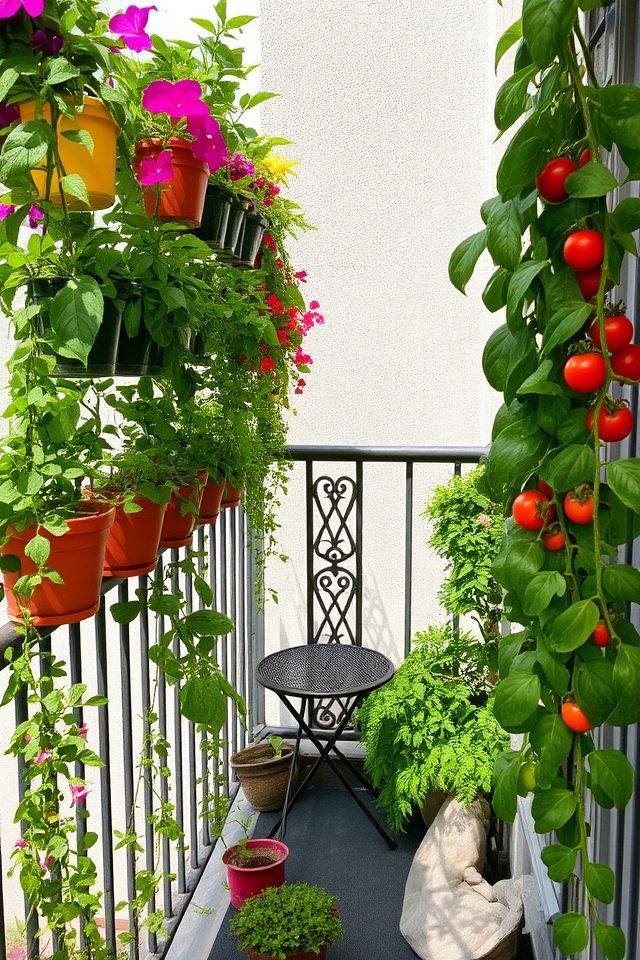
Utilizing balcony railings for additional planting is a fantastic way to maximize your space while adding greenery to your outdoor area. Attach planters or hanging pots to the railing to create a vertical garden effect. This technique allows you to grow various plants, including herbs, flowers, and even small vegetable varieties like cherry tomatoes. Not only does it enhance the aesthetic appeal of your balcony, but it also provides easy access to fresh produce right at your doorstep.
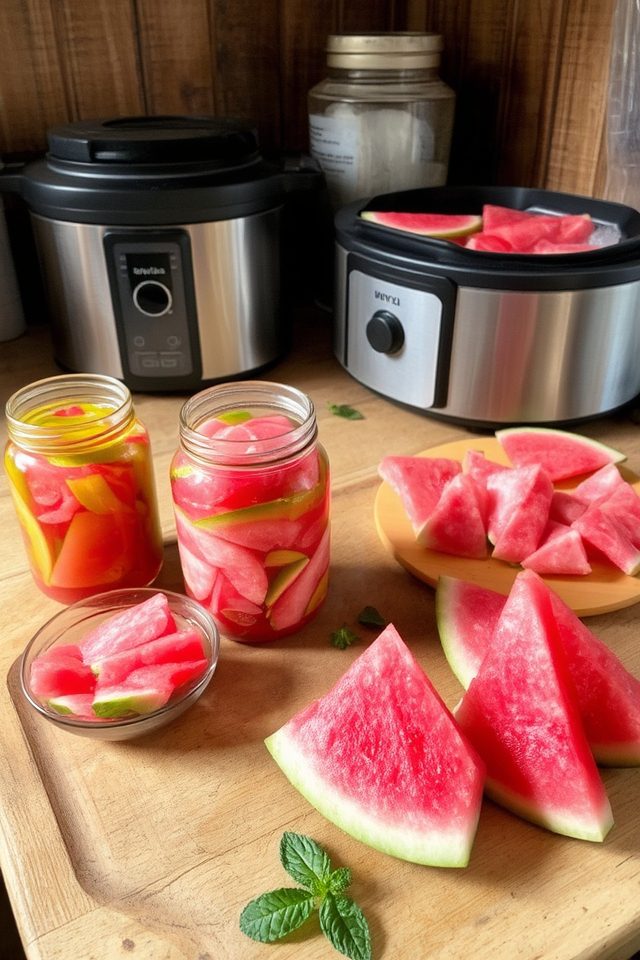
To enjoy your watermelon harvest year-round, consider methods such as pickling, freezing, or dehydrating. Pickled watermelon rind makes for a tangy treat, while freezing small slices can provide a revitalizing snack or smoothie ingredient during off-seasons. Dehydrating watermelon can create a sweet, chewy snack that lasts longer. Proper storage techniques, like vacuum sealing, can also help maintain flavor and texture, ensuring you relish the delightful taste of summer even in winter months.
By nurturing your balcony watermelon garden, you’re not just growing fruit—you’re cultivating a slice of summer in your urban oasis. With the right variety, containers, and sunlight, each vine becomes a thriving symbol of your efforts. As you sip fresh juice from your homegrown melons, you’ll savor the sweet rewards of your labor. So roll up your sleeves, embrace the vibrant energy of nature, and let your balcony bloom into a fruity paradise!

Don't let aphids, slugs, and caterpillars ruin another plant. Take back control with simple, natural methods that actually work.